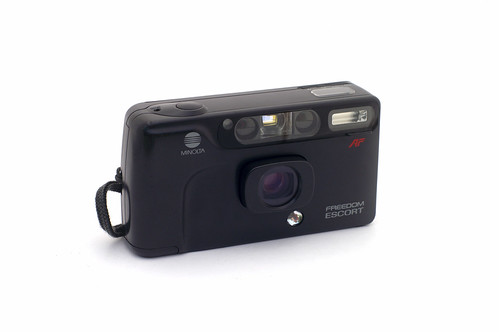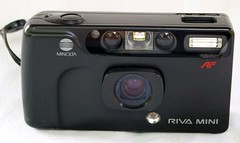Difference between revisions of "Minolta Freedom Escort"
(replaced broken photo) |
|||
| Line 1: | Line 1: | ||
{{Flickr image | {{Flickr image | ||
| − | | image_source= | + | | image_source=https://www.flickr.com/photos/captkodak/271901647/in/pool-camerawiki/ |
| − | | image=http:// | + | | image=http://farm1.staticflickr.com/94/271901647_3ef0330d1b.jpg |
| image_align=right | | image_align=right | ||
| image_text=Minolta Freedom Escort | | image_text=Minolta Freedom Escort | ||
| − | |image_by= | + | |image_by= Steve Harwood |
|image_rights=nc | |image_rights=nc | ||
}} | }} | ||
Revision as of 07:56, 28 September 2014

|
| Minolta Freedom Escort image by Steve Harwood (Image rights) |
This small lightweight compact camera by Minolta dates from around 1991. It has autofocus and a couple of flash modes, but it would be of little interest if it weren't for the fact that it is a close cousin of the Leica Mini II. With a glass lens allegedly manufactured by Minolta and electronics by Matsushita to specifications demanded by Leitz/Leica, this camera was also marketed as the Panasonic C-625AF Super Mini. The lens is very sharp for such an unassuming little camera.
Minolta Riva Mini was an alternate name. In Japan, it was called the Minolta Pico. A quartzdate (QD) model was also available.
Specifications
- Lens: 34mm, f/3.5 (four elements in three groups) which slides out and retracts electronically but has no zooming capability.
- Built-in flash has auto, red-eye reduction and forced on/off modes.
- DX-coded film with autowind.
- Power: CR123A battery.

|
| Name variant Riva Mini image by Bernard Faure (Image rights) |